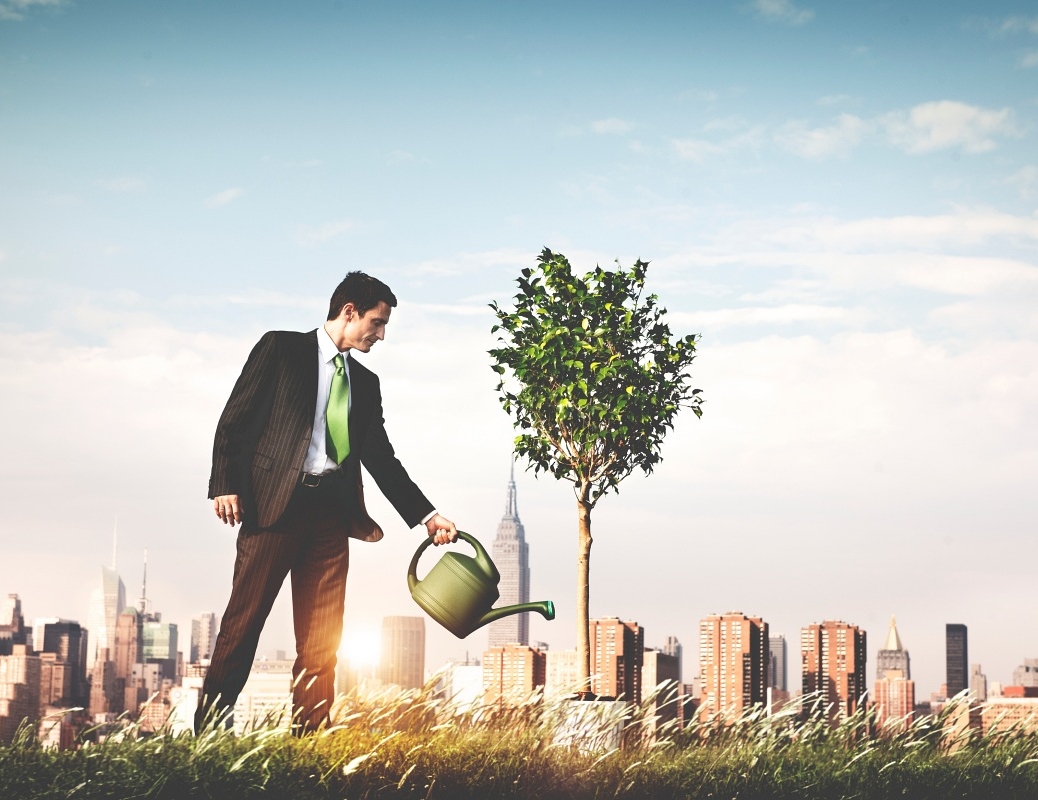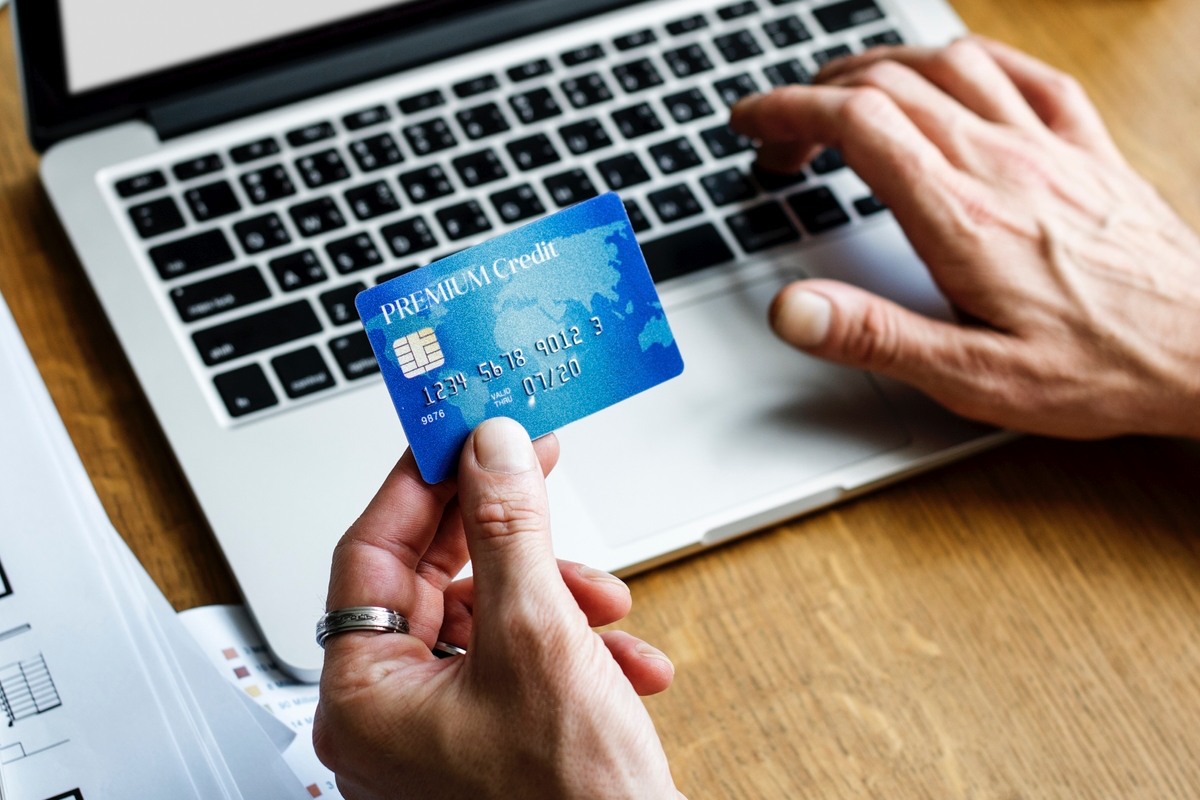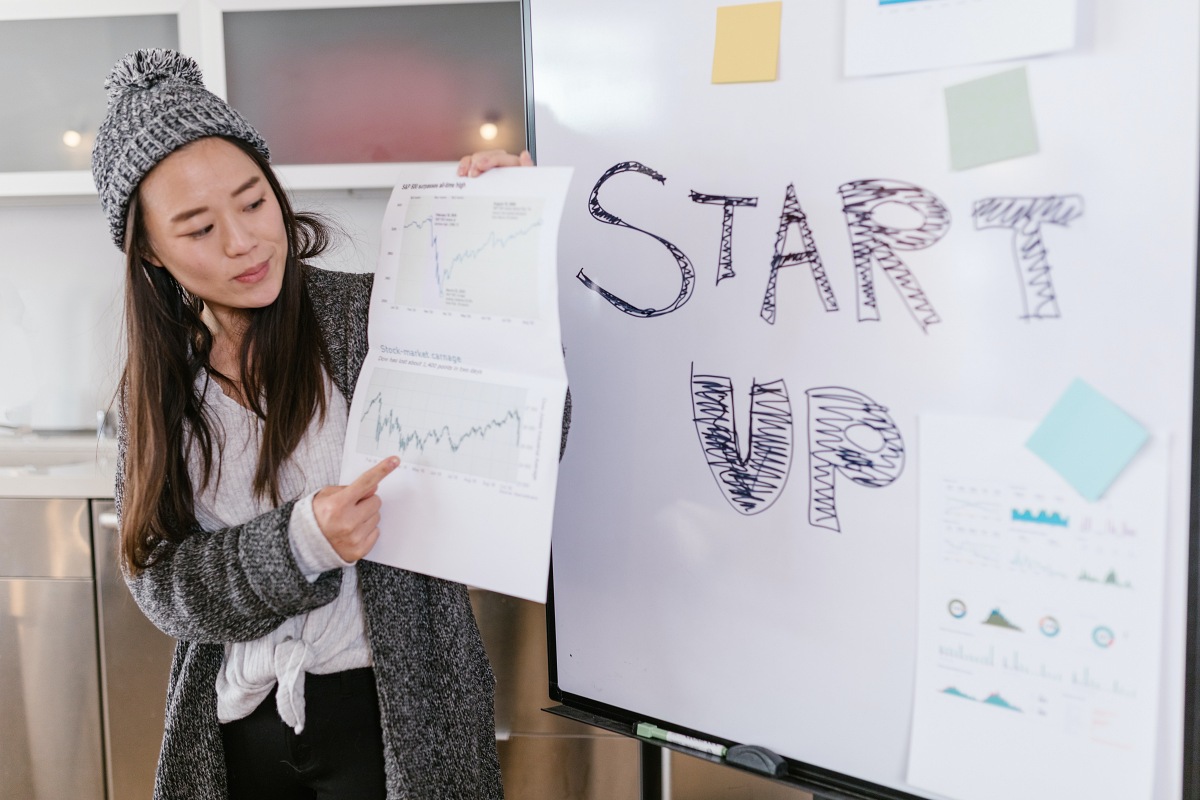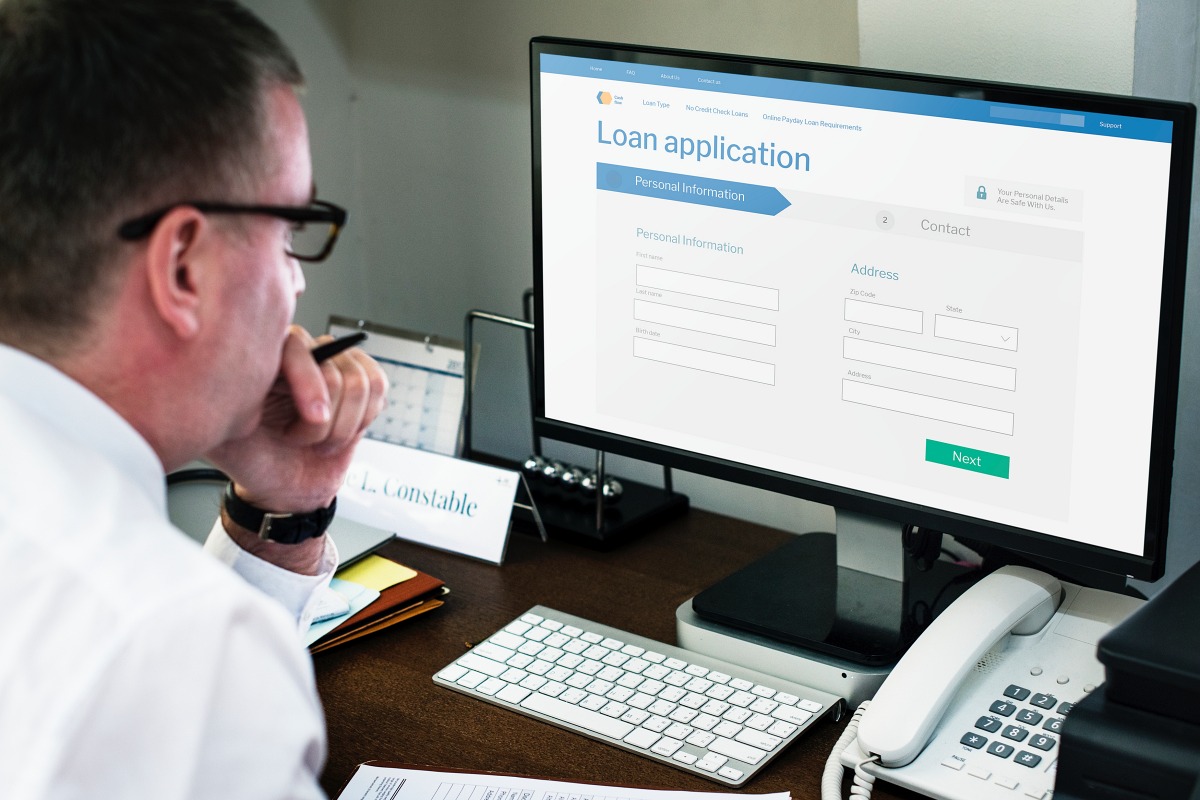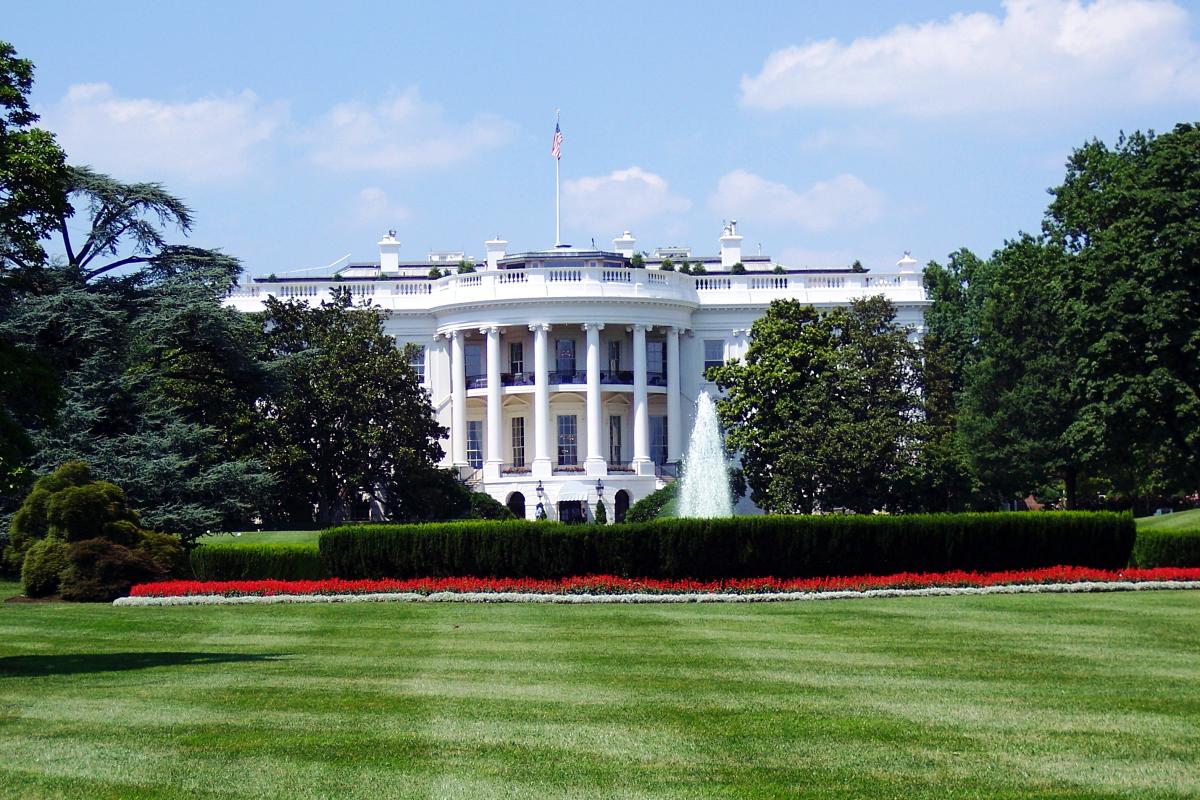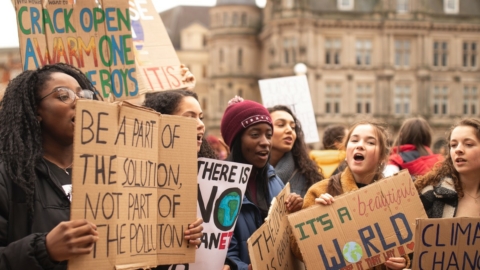If you are a green entrepreneur who is looking to launch or grow your business, one of the first questions you’ll have to figure out is how you are going to fund your business growth. Are you going to keep your day job and bootstrap? Are you willing to take on debt through your credit cards or a loan? Is your business a good candidate for crowdfunding? Or, are you hoping to find equity investors to help you scale more quickly?
There are multiple financing avenues that green businesses can explore. In this article, we unpack everything you need to know about the multiple funding options you have at your disposal, ranging from simply using your credit card or getting a small business loan, to incubators/accelerators, venture funding, green bonds, federal programs and subsidies, and crowdfunding. Whether you are a solopreneur, startup, mid-sized business, or a multimillion-dollar company, there are green financing options you can tap into.
We will cover financing options that may be most appealing or relevant based on the stage of your business, from early stage to established. Let’s get started!
1. Use credit cards to finance your eco-friendly business
Let’s begin with the easiest method to fund your small eco-friendly business — your credit card. This is not unique to green businesses, many small business owners who are bootstrapping their companies often depend on credit cards to get through the initial period of scaling their business.
The greatest advantage of using your credit card is the convenience; you can make your own financial decisions and start immediately. If you have a good credit rating, you could even find a credit card that offers interest free rates for a limited period.
For example, Slate Edge by Chase offers 0% intro annual percentage rate (APR) for 18 months on purchases and balance transfers. Or, the Citi Diamond Preferred card, which offers 0% intro APR for 21 months on balance transfers and 0% intro APR for 12 months on purchases.
Credit cards are also collateral free. However, there is some amount of personal risk involved. Using a credit card for business means you may blur the lines between business and personal spending, which could lead to potential tax and accounting issues. This could also mean that if your business takes long to get to revenue stage, and you are unable to pay your bills on time, you could damage your credit score or risk financial trouble if you are unable to pay your credit cards in a timely manner.
You can, however, lower your risk by ensuring you pay off the entire balance on time and only use the card for specific expenses, for example marketing or purchasing equipment. This will help you stay in your budget and keep making on-time payments.
2. Run a crowdfunding campaign to grow your green startup
Crowdfunding is a great way for small, new businesses to secure funding, especially if you don’t qualify for traditional business financing because of a lack of collateral or industry experience. Crowdfunding can easily fill in that gap. The funding process can also be faster and hassle-free compared to traditional financing.
Before we get into crowdfunding platforms you could potentially explore, let’s talk about some of the pros and cons of crowdfunding. Let’s begin with the pros. The biggest advantage of crowdfunding is that you don’t have to take on debt or give up any equity in your company. Most crowdfunding websites will let you raise money without taking any stake in the company, unlike angel investments or venture capital funding.
Crowdfunding is also a low-risk way to raise funds for your green idea because you don’t need to repay the money you raised, compared to a business loan which will require you to start repaying after a certain interval regardless of whether your business succeeds or doesn’t, or takes long to realize its full potential.
Crowdfunding also gives you an opportunity to create a buzz around your green product or business. People who are contributing to your campaign act as your brand ambassadors by talking about your product or offering with others.
Meanwhile, a major disadvantage of crowdfunding is that it can be difficult to get noticed unless you design a really good campaign that resonated with people. Running a crowdfunding campaign is also a time-consuming affair, especially if you are a small business with few resources.
Creating a successful campaign may require you to create a product prototype, have professionally-made videos, advertisements, and plan rewards for backers. All this requires time, resources, and patience, but it is definitely worth the effort if you reach your financial goals. The other disadvantage on certain platforms is that you are only allowed to receive the money you raise if you reach your financial target, which can be difficult for many campaigns.
Here are some popular crowdfunding platforms you can try:
Kickstarter
From hoodies made of recycled coffee grounds, to reusable cotton swabs, or glowing plants for sustainable natural lighting, Kickstarter supports funding campaigns for a range of green businesses. For your campaign to stand out, Kickstarter recommends getting creative with your campaign videos and making interesting, shareable updates using photos, audio, and video.
You can also offer backers on Kickstarter unique rewards like one of your products, or a unique experience. However, backers also pledge for projects without selecting a reward. The platform prohibits people from offering financial returns to backers.
Kickstarter, however, follows an all-or-nothing model. This means that your backers pledge money which is charged only if the campaign meets its fundraising goal by the deadline that you have set.
GoFundMe
GoFundMe allows you to raise money for as long as you want, even after you have reached the financial goal for your campaign. For your campaign to perform well on GoFundMe, you should be able to tell a compelling story in order to make a connection with funders. Your story should also be able to lay out clearly what you are raising money for and how the funds will be used.
The good thing about starting a campaign on GoFundMe is you can withdraw any amount you have raised (minus a transaction fee), even if you don’t reach your goal.
Indiegogo
Indiegogo, another crowdfunding platform that enables entrepreneurs to raise funds from everyday backers, has seen a rise in funds raised for greentech campaigns. Some of Indiegogo’s most popular greentech campaigns, like instant waste compost bin Lomi, sustainable air purifier Briiv, and solar cooler GoSun Chillest have raised a combined total of more than $8 million on their campaigns, according to the Indiegogo CEO.
You can offer perks (incentives) on Indiegogo to backers in exchange for their support. These can include the product you’re crowdfunding to manufacture, an acknowledgement of the contribution like a thank you note, or a unique experience like tickets to an event you are organizing. According to Indiegogo, campaigns offering perks are likely to raise more money.
StartSomeGood
StartSomeGood is dedicated to social causes unlike other big crowdfunding platforms. The platform, which supports social impact projects, enterprises and founders, has raised a total $13.3 million for 1,291 projects so far. It offers crowdfunding for time-bound, specific projects and recurring crowdfunding for ongoing projects, which invite supporters to sign up for a periodic contribution.
StartSomeGood also runs a crowd-lending platform — LendForGood, which connects enterprises to people who want to lend money to impact enterprises focused on solving issues in the Asia Pacific region.
3. Join an Incubator or Accelerator for Funding & Mentoring
Incubators and accelerators support and fund new eco entrepreneurs by providing financial assistance and mentoring in addition to access to technology and equipment. They usually take a small equity stake of around 5%-10% in your company in exchange for smaller amounts ranging from $20,000 to to $500,000.
Y Combinator
Y Combinator invests $500,000 per company in a group of startups, twice a year. Companies also receive mentoring and connections.
Rutgers EcoComplex
The EcoComplex “Clean Energy Innovation Center” is a business incubator that focuses on clean energy and environmental innovations and enterprises. It provides multiple resources for startups, including access to the Rutgers faculty, on-site engineering expertise with analytical equipment, financial assistance and access to venture capital and angel investors, and technology scale-up and verification capabilities, and business development assistance and mentoring.
Food Future Co
Food Future Co describes itself as a “scale-up accelerator in food, agriculture, social & environmental entrepreneurship.” The help grow small but established organizations with products and solutions related to the food system, like consumer products, plant-based food, sustainable seafood, food tech and food waste.
It has backed companies like Hire My Farmer, a platform which allows retailers and food business entities to order directly from farmers, without the intervention of middlemen.
Fashion for Good
Fashion for Good has an accelerator that supports companies working on sustainable innovations in the textile industry. In collaboration with its corporate partners like Chanel, Adidas, Kering, and Levi Strauss & Co, Fashion for Good selects 10-15 innovators every year to join its accelerator program free of cost and equity. The innovators have to display the potential to disrupt the clothing and textile value chain and have a positive environmental or social impact
4. Raise Venture Capital funds for your green startup

The biggest advantage of taking on an equity investor like a VC is that they can quickly give you access to larger amounts of capital that you might not be able to borrow from traditional sources like banks. Sometimes you may not even need to have a running business but just an idea and a plan for execution, and if it excites a VC firm, they might invest. That’s a big if, though. You’ll need to show you’ve got a business that could become very large and have a successful exit (go public or get acquired), you’ve got an experienced team who can make it happen, and ideally you’ve got some intellectual property to protect your idea.
If you are looking for VC funding, you should be prepared for extensive due diligence and ceding some amount of control depending on the amount of funding you receive.
Better Ventures
Oakland, California-based venture capital fund Better Ventures backs pre-seed to seed stage companies that are leveraging science and technology to decarbonize the economy. Their interest lies primarily in food tech, bio-manufacturing, clean energy, and closed loop production and consumption.
As an example, one of the companies the venture capital fund has invested in is Meati, a consumer goods brand that makes fungi-based meat alternatives using mushroom root.
5. Get a small business loan
SBA loans can be used to start as well as expand your green business. Guaranteed by the Small Business Administration (SBA), these are disbursed by banks and Community Development Financial Institutions (CDFIs). SBA loans have lower interest rates and offer more flexible payment terms which small businesses may not be able to access otherwise.
You might not find an SBA loan specifically designed for a green business, but you can explore multiple types of SBA loans meant for small business in general. These include SBA express loans (up to $500,000), SBA microloans (up to $50,000), SBA 504 loans (up to $5.5 million), or SBA 7(a) loans (up to $5 million), amongst others.
The 7(a) Loan Program, for example, one of SBA’s most common loan programs, can be used by small businesses for multiple business needs, like funding their short- and long-term working capital requirements, refinancing current debt, buying supplies or commercial real estate. Under this program, the maximum loan amount a business can receive is $5 million.
Here is a quick checklist of everything you should have in order before you approach a lender for an SBA loan:
- Business plan – Lenders expect a business plan in place before you apply for funding.
- Credit history – Most lenders will use credit scores to determine your credit risk and interest rates.
- Financial projection – Lenders are keen to know how you plan to use the funds and repay the loan.
- Collateral – Many lenders require some form of physical collateral (car, house, inventory etc) to guarantee your loan. However, loans up to $25,000 don’t need collateral.
- Use of funds – As a borrower, you need to know exactly how much capital you need and how it will help your business grow.
- Industry experience – Industry experience isn’t necessary but it may help your case. Lenders are more confident in lending if they know you have firsthand knowledge and experience in the industry.
6. Apply for government loans and grants for sustainability projects
There are multiple Federal loan and grant programs available for businesses that are working on sustainability projects. Often there are windows of time to apply based on specific priorities or projects that the Federal government wants to promote and support at that time. Here is a list of grants you can apply for based on the type of project you are looking to fund:
Department of Energy
The U.S. Department of Energy supports a number of loan, grant, and financing programs for energy-related businesses, from startups to more established companies.
The Loan Programs Office (LPO) finances large-scale, energy infrastructure projects; it is a great option for established businesses to gain funding for their green projects. LPO offers loans and loan guarantees for innovative clean energy, advanced transportation, and tribal energy projects.
With about $40 billion in available loan and loan guarantee authority, LPO can provide access to debt capital for innovative projects and high-impact, energy-related ventures. Depending on your business needs, LPO can either be the sole lender, can co-lend with private lenders, or guarantee loans from other lenders.
Small Business Innovation Research (SBIR) Program
The U.S. Environmental Protection Agency’s Small Business Innovation Research (SBIR) Program is one of 11 such federal programs launched about 40 years ago. Also called America’s Seed Fund it supports small businesses in developing and commercializing innovative environmental technologies. It provides up to $2 million and takes 0% equity.
Its main focus areas are clean and safe water, air quality and climate, land revitalization, homeland security, sustainable materials management, safer chemicals, and risk assessment.
Office of Air and Radiation (OAR)
The EPA’s Office of Air and Radiation (OAR) offers funding for programs related to air quality, transportation, climate change, indoor air, and other related areas, based on specific objectives that OAR wants to achieve.
Office of Land and Emergency Management (OLEM)
The EPA’s Office of Land and Emergency Management (OLEM) offers grant funding for projects related to brownfields, solid waste management, resource conservation and recovery, and other related topics, based on specific objectives that OLEM wants to achieve.
Justice40
The Justice40 Initiative is an environmental justice funding program established by President Biden that mandates that 40% of certain Federal investment funds should flow to “disadvantaged communities that are marginalized, underserved, and overburdened by pollution.”
The categories of investment that Justice 40 covers are: climate change, clean energy and energy efficiency, clean transit, affordable and sustainable housing, training and workforce development, remediation and reduction of legacy pollution, and the development of critical clean water and wastewater infrastructure. Here is a complete list of the Justice40 Initiative covered programs.
Brownfields Grants Funding
The EPA’s Brownfields Program offers grants for brownfields assessment, cleanup, revolving loans, environmental job training, technical assistance, training, and research. The grants are, however, available for local governments, quasi-governmental agencies, non-profit organizations, and redevelopment agencies.
Inflation Reduction Act (IRA) Initiatives
The Inflation Reduction Act (IRA), which was passed in September 2022, offers multiple provisions for small business, like a tax credit that covers 30% of the cost of switching over to low-cost solar power, and a tax credit up to $5/square foot to support energy efficiency improvements. The Act will also create a new Clean Energy and Sustainability Accelerator. This Inflation Reduction Act fact sheet from non-profit LCV provides an excellent summary of the types of environmental projects that will be prioritized.
We hope this list of funding sources for green businesses has given you some good options to look into. From sustainable fashion and clean beauty to renewable energy and clean technology, green businesses are at the heart of fighting the climate crisis and protecting our planet. Thank you for doing what you do!
Republic of Green
Republic of Green loves to promote green entrepreneurs! If you haven’t already, we invite you to add your eco-friendly business to the Green Business Directory. There are always-free and premium options. And, if you would like to have your business featured in an interview style news article, please write us at hello@republicofgreen.com to introduce yourself and tell us a bit about your business!
- Best green credit cards and eco-friendly debit cards - March 12, 2023
- Top Environmental Nonprofits Fighting Climate Change & How to Get Involved! - March 11, 2023
- Sustainable Fashion: 17 innovative companies promoting a circular economy - January 2, 2023
